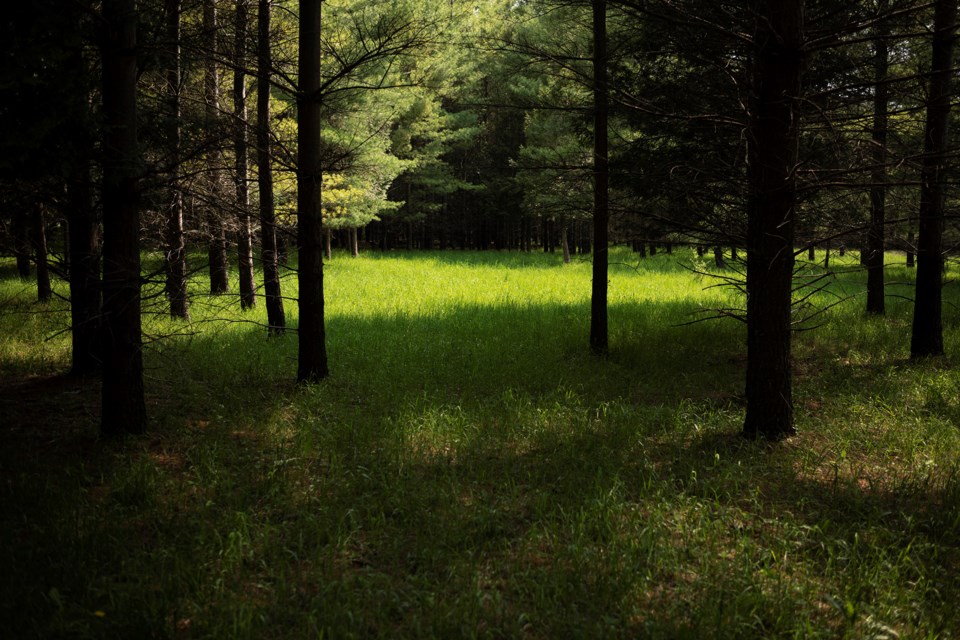A local group is being formed to explore bringing natural burials to the area, with hopes of leaving as small an environmental footprint as possible.
A natural burial is one completed without chemical embalming, in a natural setting without tombstones or concrete burial vaults. The idea is for the bodies buried in a simple unvarnished wood box or shroud, to eventually become a part of the natural ecosystem.
Sheila Campbell is a resident of St. Joseph Island who recently began looking into the possibility of converting a 14.5 acre tract of land she owns on the island into a natural burial ground.
“I thought maybe it would be suitable for a natural burial ground. I am 73, I am not going to be around forever — but I am not planning on leaving soon,” she said.
Campbell saw an online ad for the Natural Burial Association and followed the link to get more information on what it takes to set up a natural burial ground.
“It’s pretty complicated, actually,” she said. “There are no standalone natural burial grounds in Ontario.”
There are some cemeteries in southern Ontario that have a section dedicated to natural burials, but Campbell said the ones she has seen look like more like cemeteries or parks than true natural areas.
“I am only interested in it if it is truly left a wild space,” she said.
The biggest hurdle, said Campbell, is a one-time $100,000 license to be paid to the Ontario government when any new cemetery is established. That money is earmarked for future maintenance, something Campbell said shouldn’t apply for a truly natural burial ground. In January that license fee increased to $165,000.
“The $165,000 fee you have to come up with, above and beyond everything else, kind of stopped me cold because I don’t have that kind of money. There’s no way I could do it,” she said. “That’s basically to make sure it’s always maintained but the whole idea is that is maintained by nature, so there is not going to be a lot of maintenance involved.”
Campbell then reached out to local environmental group Clean North to see if they had ideas on how to bring natural burials to the area.
“I was approached by Sheila because it just seemed like such a good fit with Clean North because we are all about the environment and waste reduction and preventing pollution and things like that,” said Abby Obenchain, a volunteer who handles the communications for the group.
“I have thought about natural burials for quite a few years. I told my sister when I die I want you to drag me out to the bush and bury me under a hemlock tree,” said Obenchain. “I just think this is something that time has come and it is frankly kind of frustrating and disappointing that Canada is so much further behind the U.S. on this.”
Obenchain said she doesn’t understand why many people are put in highly finished caskets, chemically embalmed and placed into concrete vaults in the ground.
“It doesn’t make any sense to me, it’s like why are we putting this level of protection on something that has, since the dawn of human life, been a natural process. We have taken the natural out of it and I am not sure to what end,” she said. “People who think they are doing a green burial by being cremated really need to look into that because cremation is not as green as it seems. Every time you’re burning something there are emissions.”
Campbell and Obenchain are now part of a small group of about 20 people working to bring natural burials to the area and to educate people on how they can make a burial more environmentally friendly.
“For example, you can have a plain pine casket and you can choose to not be embalmed. You just have to ask, but a lot of people don’t know that there are greener options,” said Obenchain. “That is a conversation people have to have with their funeral home director and I encourage people to talk about these things long before they die because you do not want to be trying to discuss this when someone has just died — it’s just so stressful.”
Obenchain said the $165,000 license fee charged by the Ontario government to new burial grounds is a disincentive for small businesses looking to start up, possibly leaving it up to existing operators to offer the option for natural burials.
“There are cemeteries in southern Ontario where sections of the cemetery is for natural burial — they have converted part of it — maybe that would be an option for Sault Ste. Marie,” she said.
On its web site, Clean North suggests people who are looking to support the concept of natural burials to contact Sault Ste. Marie MPP Ross Romano, the minister of Government and Consumer Services. His ministry oversees regulation of the burial industry.
